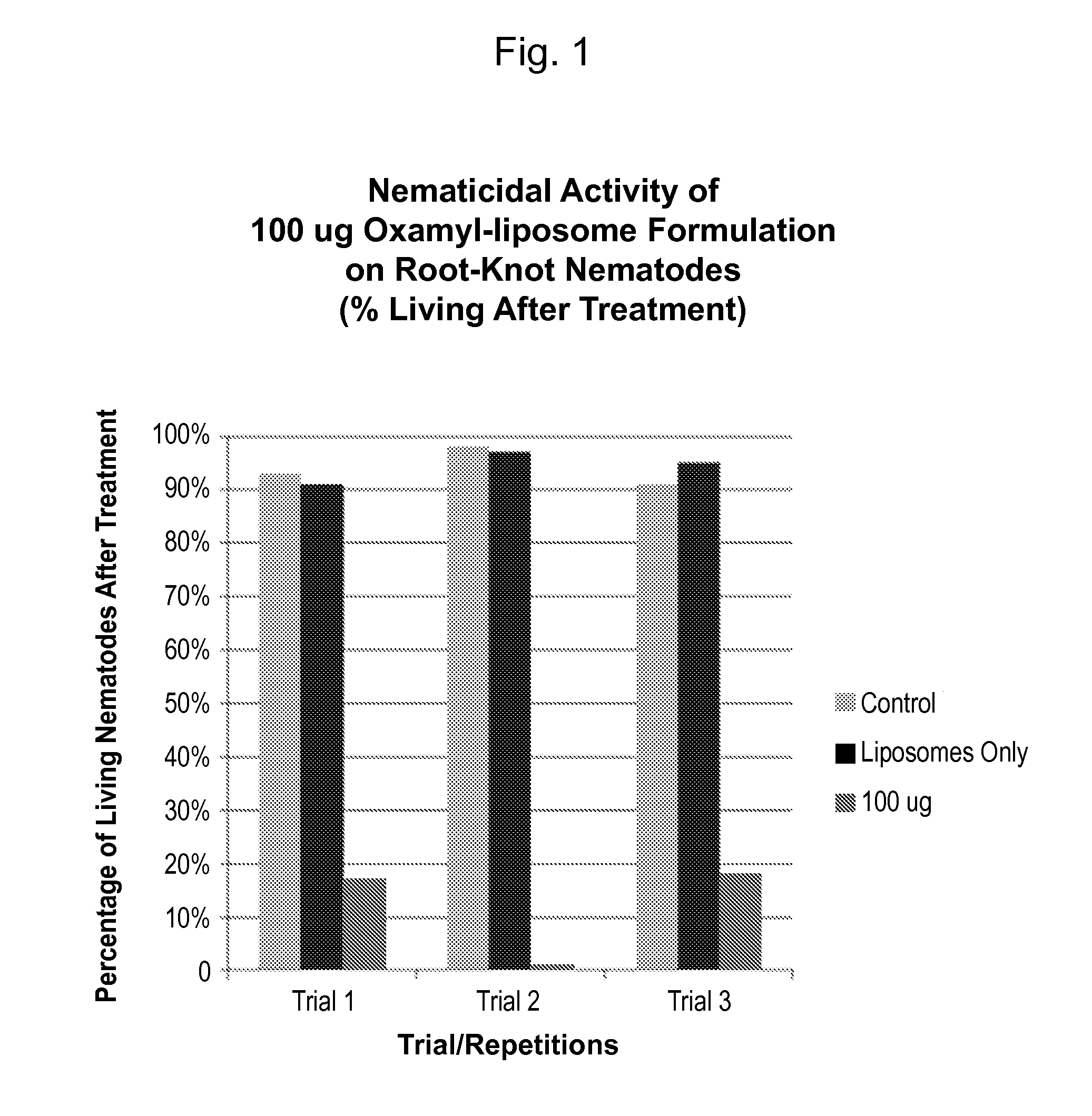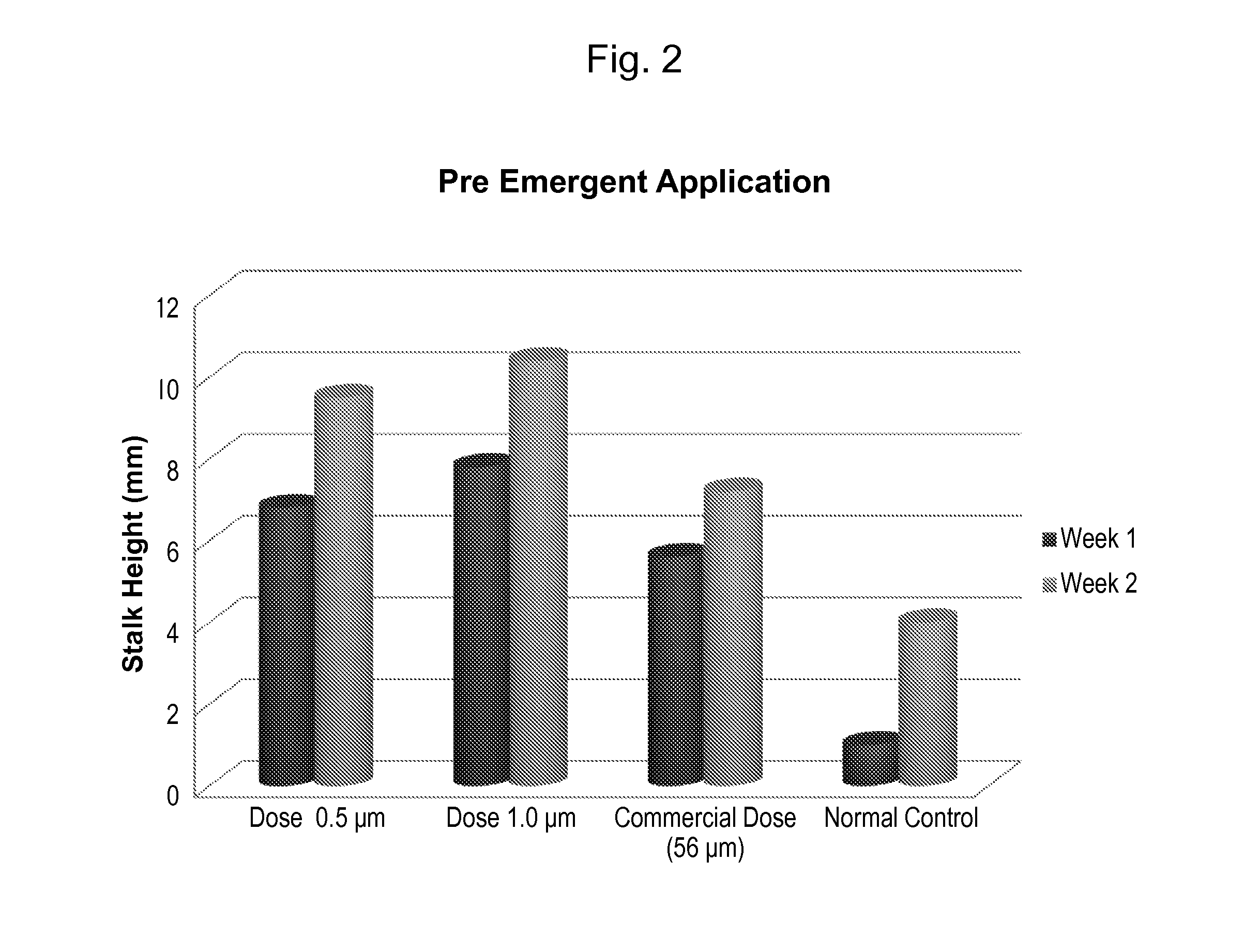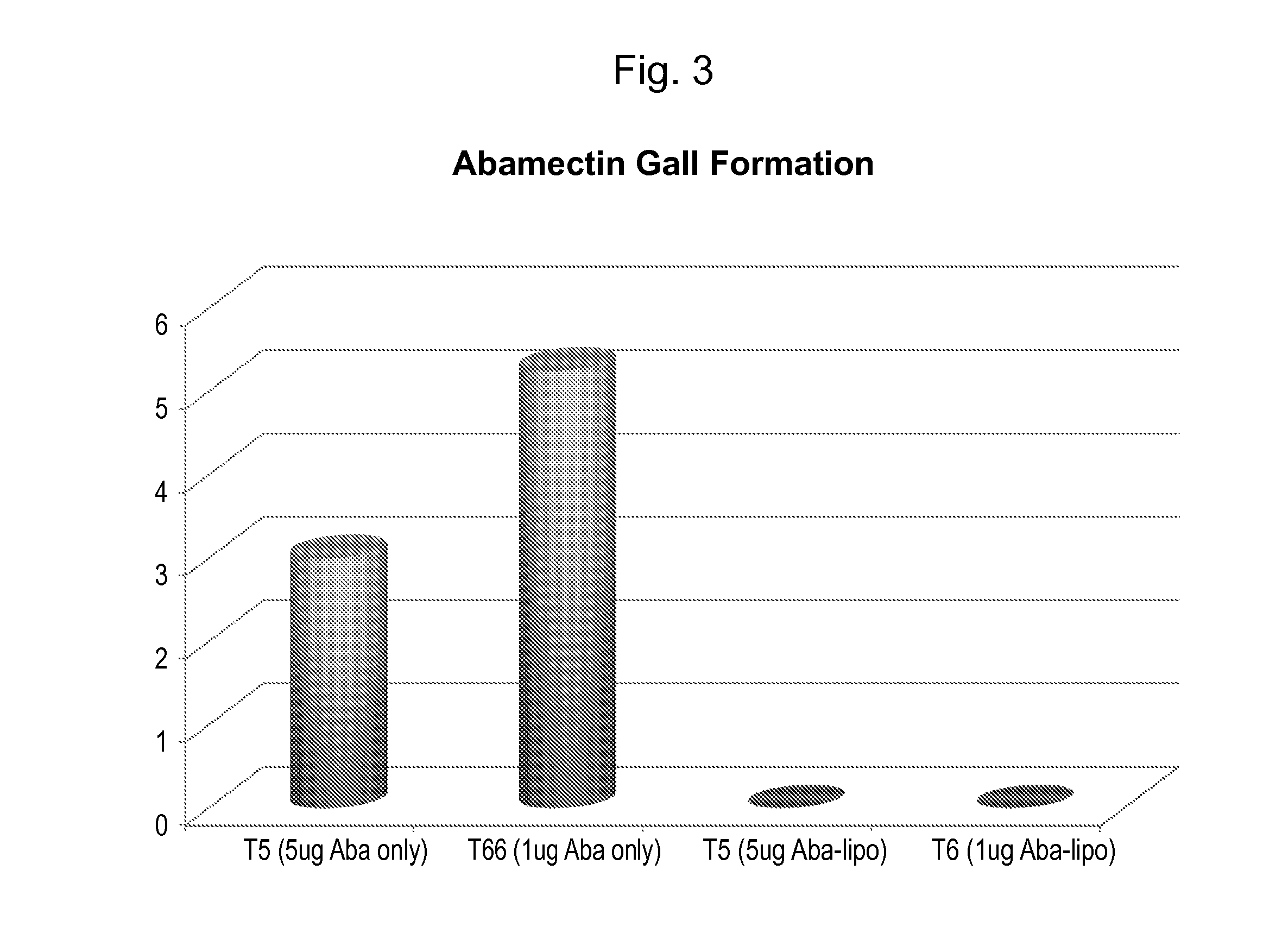Liposome-Attractant Formulations
a technology of liposomes and attractants, applied in the field of liposomeattractant formulations, can solve the problems of further restrictions on the use of nematicides and pesticides, and achieve the effects of reducing the rate of application of active ingredients, increasing storage stability, and broadening the spectrum of pesticidal activity
- Summary
- Abstract
- Description
- Claims
- Application Information
AI Technical Summary
Benefits of technology
Problems solved by technology
Method used
Image
Examples
example 1
Egg Extraction
[0101]M. incognita eggs collected from tomato cultures by NaOC1 extraction (Hussey and Barker, 1973). Briefly, six to twelve week old infected tomato roots were cut into 1-2 segment. Root segments were shacked vigorously in 200 ml of a 0.5% Na O Cl solution for 4 min. Then, the Na O Cl solution was passed quickly through a 200-mesh (75-μm), nested over a 500-mesh sieve to collect freed eggs. The a 500-mesh sieve with eggs was quickly placed under a stream of cold water to remove residual Na O cl and rinsed several times. About 50 ml queous suspension of eggs was collected and number of eggs per unit volume will be counted. The egg suspension was allowed to sit at room temperature for 4 days. The hatching juveniles were collected and used in the subsequent experiments.
example 2
Liposomes Preparations
[0102]Liposomes having an aqueous core and phospholipid bilayers were prepared using the thin-film dehydration-rehydration method obtaining, multilamilar vesicles (MLVs) and small unilamellar vesicles (SUVs) (Bangham et al., J. Mol. Biol. 13:238-252 (1965); Gosangari & Watkin, Pharm Dev Technol. 17:383-8 (2012)). Using thin-film hydration method, briefly, required amounts of lipids [1,2-Dipalmitoyl-sn-glycero-3-phosphocholine (DPPC) liposomes and 1, 2-distearoyl-snglycero- 3-phosphocholine (DSPC)] were dissolved in chloroform, and a thin film will be formed on the inner side of the round bottom flask, by evaporating the solvent under vacuum using a rotavapor. The lipid film formed was stored overnight in vacuum desiccator to eliminate traces of chloroform. The film was then hydrated at 58° C., above the Tc of DSPC, using 10 mL of phosphate-buffered saline (PBS, 20 mM Na2HPO3-NaH2PO3, 150 mM NaCl, pH 7.0) containing different concentration of Oxamyl. The hydrati...
example 3
Fluorescent Uranin-Liposomes:
[0104]We have developed a micron sized liposome that has the ability to encapsulate different concentrations of oxamyl (or other insecticide / nematicide). It is an efficiency method that suppresses the root-knot nematodes. To prove this concept we used liposomes loaded with 100 mM of the hydrophilic fluorescent reagent uranin to test oral administration of water-soluble substances to the plant parasitic nematode. Liposomes prepared as mentioned above. Uranin solution (2 mg / ml) in PBS buffer was added to thin film of liposomes during rehydration at above 50° C. Unencapsulated uranin was removed through gel chromatography. About 50 ul of uranin liposome solution was mixed with nematode suspension and incubated for 2-3 days at room temperature. The mix was then visualized by fluorescent microscope. Our data demonstrate that ingestion of liposomes loaded with fluorescent dye resulted in successful oral delivery of chemicals into the intestines of Root-knot an...
PUM
| Property | Measurement | Unit |
|---|---|---|
| Weight | aaaaa | aaaaa |
| Mass | aaaaa | aaaaa |
| Density | aaaaa | aaaaa |
Abstract
Description
Claims
Application Information
 Login to View More
Login to View More - R&D
- Intellectual Property
- Life Sciences
- Materials
- Tech Scout
- Unparalleled Data Quality
- Higher Quality Content
- 60% Fewer Hallucinations
Browse by: Latest US Patents, China's latest patents, Technical Efficacy Thesaurus, Application Domain, Technology Topic, Popular Technical Reports.
© 2025 PatSnap. All rights reserved.Legal|Privacy policy|Modern Slavery Act Transparency Statement|Sitemap|About US| Contact US: help@patsnap.com



